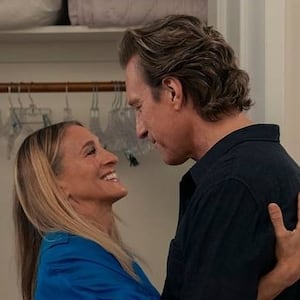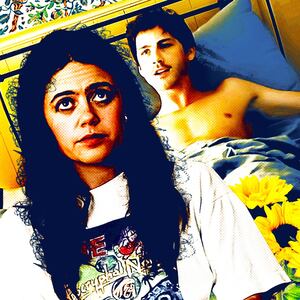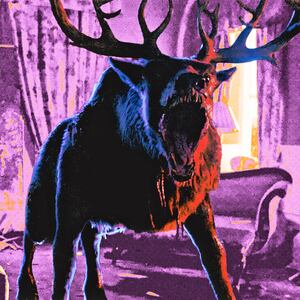With the possible exception of Billy Madison, 1996’s Happy Gilmore is Adam Sandler’s crowning big-screen comedy achievement. Thus, Happy Gilmore 2, a 29-years-later sequel premiering now on Netflix, has a (relatively) high bar to clear.
To say that it doesn’t may be an all-time understatement.
Arguably the least inspired film in the actor’s canon, if not all of movie history, director Kyle Newacheck’s follow-up is a cinematic abomination devoid of imagination, skill, or purpose, floundering about for a criminally long 114 minutes in search of a single laugh.
Even for a star who’s made his fair share of duds, this is Sandler’s nadir, a cash-grab nostalgia-fest that pairs terrible new jokes with stale old ones, as well as piles on cameos from family members and famous friends who were ostensibly tricked by their love of the original into participating in this Hindenburg-grade fiasco. To quote its villain Shooter McGavin (Christopher McDonald), it’s like eating s--t for breakfast.
(Warning: Some spoilers ahead.)
There isn’t a person alive who’s ever wondered what became of Sandler’s early man-child heroes, and yet Happy Gilmore 2 nonetheless opts to answer that question regarding its title character, who went on to marry Virginia (Julie Bowen) and have four knuckle-headed sons and one daughter, Vienna (Sunny Sandler), who’s a ballet prodigy.

Life was good for hockey player-turned-golfer Happy until he killed Virginia with a wayward drive. In the aftermath of this tragedy, Happy lost everything, including his grandmother’s house. Now, he resides in a ramshackle place with a garage inhabited by golfing legend John Daly, whose famous struggle with alcoholism is made fun of via his recurring consumption of hand sanitizer—a gag that’s related to Happy’s own difficulties with booze, which he hides in various containers (a fake cucumber, the TV remote, a cuckoo clock).
Because Vienna needs $75,000/year to go to ballet school in France—perhaps the most preposterous plot point in a film rife with them—the retired Happy tries to return to golf, only to stumble on a municipal course (playing alongside Margaret Qualley, Eric André, and Martin Herlihy) where he drunkenly crashes his golf cart and winds up being sentenced to Alcoholics Anonymous.
There, he discovers that his counselor is Hal (Ben Stiller), the evil creep who used to terrorize his grandmother at her nursing home, and he befriends Charlotte (Sadie Sandler). While struggling to stay sober, Happy learns that he can earn cash for Vienna’s tuition by playing in a competition between pros and the upstarts of a new extreme-golf league founded by Frank Manatee (Benny Safdie), who’s angry that Happy has spurned his offer to be the face of his enterprise, and who has really bad breath—a recurring condition that’s brutally unamusing.
Happy Gilmore’s humor stemmed from Sandler’s rage-aholic Bruins-loving protagonist trying to fit into the prim and proper golf world, but nearly three decades later, the headliner doesn’t radiate anger so much as slovenly inertia. As proven by every aspect of his recent output (the leaden direction; the halfhearted writing; his trademark baggy gym attire), laziness is now Sandler’s cinematic brand. That clashes poorly with the spirit of Happy, who here feels like a sleepy approximation of his former self, going through the motions out of begrudging obligation rather than impulse.
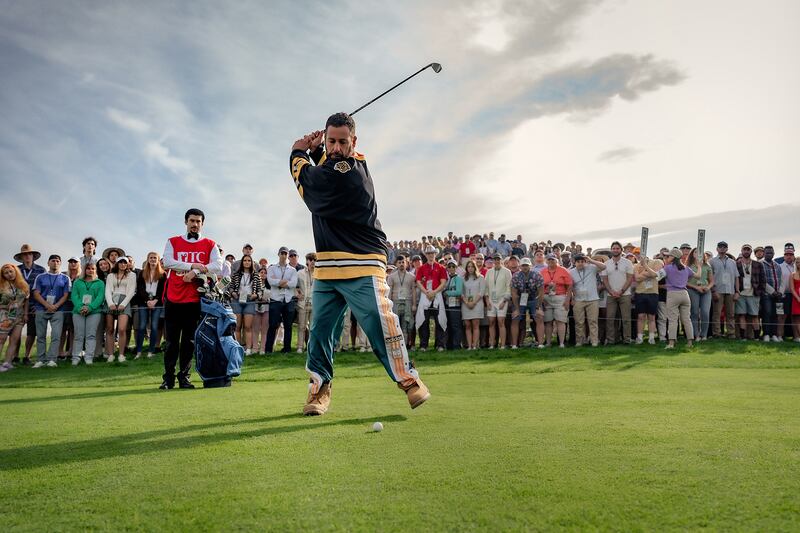
Happy Gilmore 2 is shot with typical Netflix dimness, further depressing the material’s energy, and the script (by Sandler and Tim Herlihy) drags its feet from start to finish. It’s common for such affairs to rehash their predecessor’s most beloved lines and scenes. However, Newacheck’s film goes one pandering step further, embellishing its callbacks with quick flashbacks to the first-movie moments being referenced.
From Chubbs’ (the late Carl Weathers) wooden hand and the infamous jeering fan’s (the deceased Joe Flaherty) “jacka--” taunt to Happy’s former caddy being strangled and the weird old “Mister Mister” lady who got crushed by an air conditioner, virtually every notable bit from Happy Gilmore is redone, and almost always without a novel twist. Apparently, Sandler and company believe fans have only been waiting for the same thing, except in sloppier form.
Happy Gilmore 2 has no courage to be its own thing, and its story—involving Happy squaring off against Safdie’s energy drink-y ringers, who’ve had hip surgery to enhance their swings—is so dreary and tossed-off that it feels as if it’s actively trying to make viewers tune out.
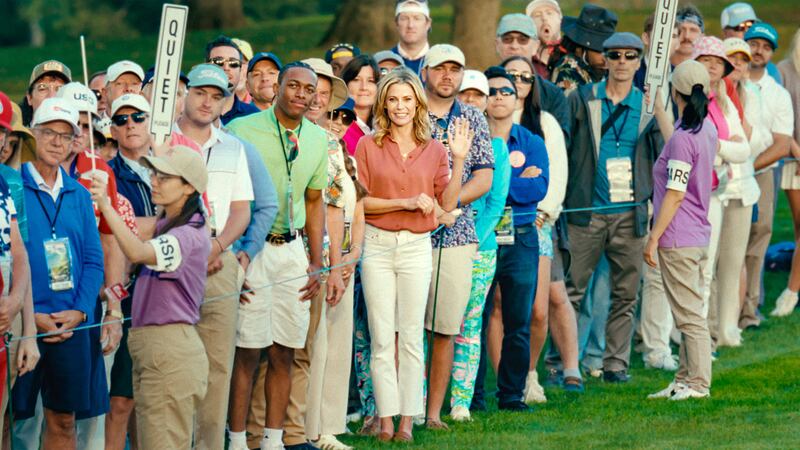
Bad Bunny (as Happy’s caddy), Travis Kelce (as a waiter), and a host of pro golfing luminaries (including Jack Nicklaus, Nick Faldo, Rory McIlroy, and Scottie Scheffler) prove that they should stick to their respective fields. Meanwhile, Sandler’s old buddies (Stiller, Dennis Dugan, Kevin Nealon, Steve Buscemi) do nothing with nothing, and his kin (even wife Jackie briefly appears as Vienna’s ballet coach) underline that they’re simply on-screen courtesy of nepotism.
Between its wooden non-actors, squandered comedians, and flat relatives, it’s a mix of the bad, the bad, and the bad.
Sandler curses and fumes but his heart doesn’t seem in it; Happy is just an exhausted loser whose path to redemption is preordained and paved with miserable quips. The film’s big twist, as it were, is that upon being released from the psychiatric facility that’s been his home for the past 30 years, Shooter—following a throwback fight at a cemetery where Chubbs, grandma, and Bob Barker are buried side-by-side (?!?)—joins forces with his old nemesis Happy to defeat Manatee and his players (led by Haley Joel Osment).
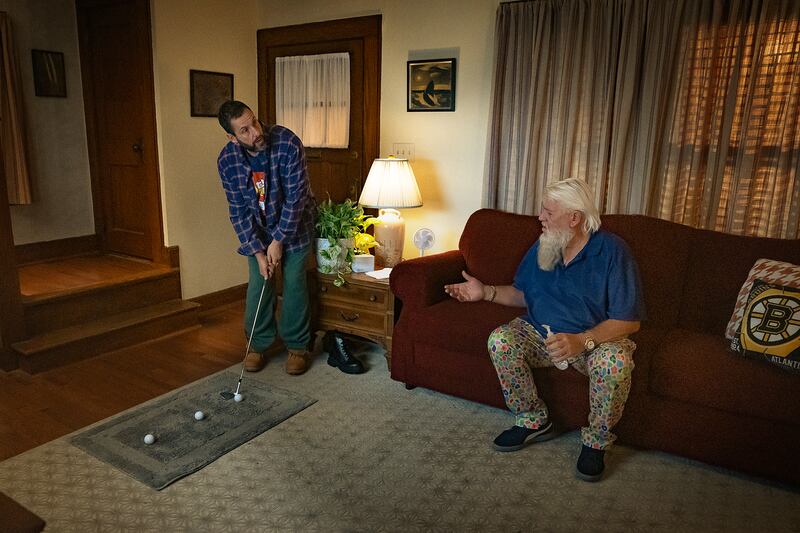
Their partnership, alas, is as half-hearted as everything else in these proceedings, whether it’s Sandler’s sons’ fondness for mooning people, no one remembering Osment’s character’s name, or Daly’s inability to do basic math.
As Sandler has grown into a more accomplished actor (see, The Meyerowitz Stories, Hustle, and Uncut Gems), he’s lost any trace of his hilarious fastball; his goofiness has grown stale and dispirited with age, and to date, he’s failed to compensate by finding a different register in which to be funny.
With all due respect to Grown Ups 2, The Ridiculous 6, and Sandy Wexler, Happy Gilmore 2 is the bottom of the Sandler barrel—a grim disaster that not only sullies the good name of its ancestor, but so badly flails on its own limited terms that it suggests the A-lister should concentrate on dramatic parts and leave the immature comedy to others.


